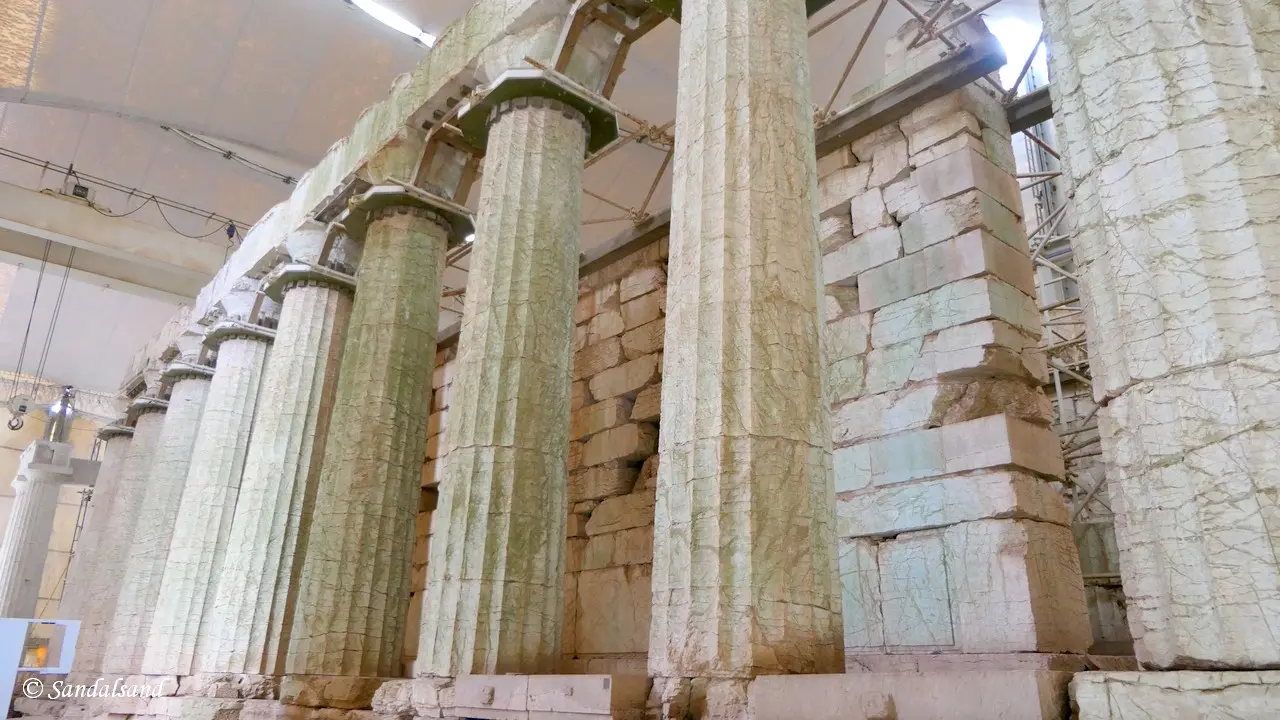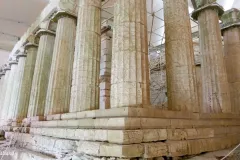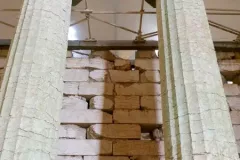The temple of Apollo Epicurius at Bassae is one of the best-preserved monuments of the ancient Greek civilisation, from the 5th century BC.
The UNESCO World Heritage List includes over a thousand properties. They have outstanding universal value and are all part of the world’s cultural and natural heritage.
Official facts
- Full name of site: Temple of Apollo Epicurius at Bassae
- Country: Greece
- Date of Inscription: 1986
- Category: Cultural
UNESCO’s World Heritage Centre’s short description of site no. 0392:
This famous temple to the god of healing and the sun was built towards the middle of the 5th century B.C. in the lonely heights of the Arcadian mountains. The temple, which has the oldest Corinthian capital yet found, combines the Archaic style and the serenity of the Doric style with some daring architectural features.
A bit more about the temple
Citizens of the city of Figaleia to the north built the temple and worshipped Apollo here for several hundred years. They employed the architect behind the Parthenon in Athens, Iktinos, to design it. The temple dates back to the height of the Greek civilisation in the second half of the 5th century BC (420-400 BC). It was abandoned during the late Roman era and appears in fact to be forgotten for almost 1700 years.
British and German antiquaries rediscovered it in 1812. A plaque on the site states that these so-called “excavators” looted the temple and removed the extravagant and large frieze from the site. It is now exhibited in the British Museum in London, like so many artefacts from around the world.
The temple of Apollo Epicurius was actually the first Greek site on the World Heritage List. It is the only temple of Antiquity to combine three architectural orders: the Doric, Ionic, and Corinthian styles. By the way, Apollo was the god of oracles, healing, archery, music and arts, sunlight, knowledge, herds and flocks, and protection of the young. Epicurius means assistant in evils of war. In other words the people of Figaleia hoped that their sacrifice to Apollo and worshipping of him, would aid them in wars with other cities. Or, as a Greek geographer in the second century AD wrote, as a gratitude in the fight against a plague.
My visit
The columned temple of Apollo Epicurius is one of the best-preserved monuments of classical antiquity. It sits at a high altitude (1131 m) in a remote, barren, and mountainous part of Western Peloponnese. One would suppose that the location accounts for its late rediscovery and preservation.
However, weather has over the centuries taken its toll, and there has been a progressive deterioration of the temple’s predominately limestone fabric. In 1987, the authorities provided the temple with a tent, as a means of temporary protection. It is still there.
Sandalsand’s visit was during a road trip to the many World Heritage Sites in this part of Greece. Apart from a visit inside the huge canopy over the temple, there is not much to see. However, the panoramic views of the mountains and hills in the area are wonderful.










